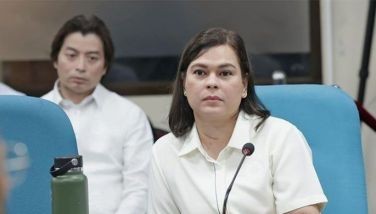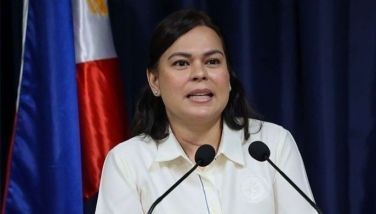Financing education through the special education fund tax
June 24, 2002 | 12:00am
Local governments in the Philippines are given a special facility to finance education. This is the Special Education Fund (SEF) Tax, a 1% levy on the assessed value of real properties. The SEF, which can be imposed by provinces, cities, and, municipal governments within the Metropolitan Manila area applies to all forms of real property such as land, building, improvements, and machinery.
Being a surtax on real properties, the SEF exhibits strengths and weaknesses that are similar to the real property tax.
For one, the base of the tax, or the assessment level, is only a fraction or a percentage of the market value of the land.
For another, the assessment levels for improvements are differentiated based on land use and market value. The use of assessment levels as the tax base builds under-taxation into the tax structure.
In 2000, the SEF raised about P7.9 billion, accounting for about 6% of total revenues of local governments. It raised a slightly bigger amount than the basic realty tax (P7.3 billion). Compared to revenue sources of the national government, the SEF raised roughly as much revenues as the percentage tax on banks and financial institutions and the income tax withheld from individuals.
The revenues from the local business taxes generated more revenues (P12 billion) than the SEF. However, the SEF is the fastest growing revenue sources of LGUs, with an average annual growth of 20%.
The normal trend is for 30% of the SEF to finance maintenance and operating expenses with the biggest chunk going to athletic meets (4.5% in the case of a city and 6% in the case of a municipality.) Instructional materials such as books get less than 1% of the SEF budget.
The school building program is allocated 10% to 13% of the budget.
The suggestions of respondents (local executives, treasurers, and members of the Local School Boards) centered on the following measures:
1. Improve the administration and collection of SEF through more current valuation of real properties and intensive collection of delinquent accounts;
2. Conduct tax education campaigns in closer coordination with barangay officials and association of parents and teachers;
3. Increase the SEF rate; and
4. Improve the processes of prioritization, budgeting and disbursement of funds. Respondents expressed reservations on the prioritization of athletic meets relative to the provision of more books for the students.
The measures proposed by the respondents are the following:
1. Develop user charges such as renting out school facilities, gymnasium and function rooms;
2. Encourage the business sector to adopt a school in the locality;
3. Involve parents in financing the needs of the school, particularly expenses on utilities and instructional materials;
4. Tap other funds such as proceeds from lotto and grants from foreign governments and foundations;
5. Sponsorship of fund raising campaigns, such as beauty contests;
6. Development of an endowment fund from school alumni;
7. Improve the equity in the allocation of the internal revenue allotment and the allocations of funds for national school building program – studies on the IRA allocation have emphasized that the resulting IRA allocation is inequitable;
8. Encourage the allocation of congressional pork barrel to basic education instead of higher education. To effect this, there has to be incentive for members of Congress to use their pork barrel to improve the financing of basic education.
The budgeting and disbursement of SEF for education are entrusted to the Local School Boards. Towards the improvement of these processes, survey respondents suggested the following:
1. Develop a more focused role of the LSB. It was observed that the LSB seems to be everywhere: clean and green programs, sports program, and environmental awareness. Such lack of focus fragments the use of the SEF and deprives education the use of valuable resources.
2. Institute measures to make the LSB a more effective organization for effecting education reforms.
• Formulate a development program on education for the LGU that articulates the collective vision of the major stakeholders.
• Institute regular consultative meetings of LSB with parents, teachers, non-teaching personnel.
• Develop and implement measures to make the processes of budgeting and disbursements more transparent. In some instances, the respondents noted that the SEF was used for non-educational activities such as the payment of wages of casual employees. There were suggestions to involve external auditors (Commission on Audit or auditors from the private sector) to ensure that funds are disbursed well.
• Develop guidelines on budgeting and spending the SEF fund.
• Strengthen LSB meetings: regular dates for meetings; regular attendance of members; and organization of members into committees. It was suggested that the agenda should be broadened to cover not only the LSB budget but also other policy issues on education.
• Institute means to involve many sectors in LSB: NGOs and barangay officials to mobilize community support of education reforms; corporate sector to help in revenue generation and to build the capability of LSBs to improve management of education projects
• Transform LSBs to become a pro-active instead of a reactive organization.
• Improve project implementation of LSBs
• Minimize politics in LSB affairs.
Being a surtax on real properties, the SEF exhibits strengths and weaknesses that are similar to the real property tax.
For one, the base of the tax, or the assessment level, is only a fraction or a percentage of the market value of the land.
For another, the assessment levels for improvements are differentiated based on land use and market value. The use of assessment levels as the tax base builds under-taxation into the tax structure.
The revenues from the local business taxes generated more revenues (P12 billion) than the SEF. However, the SEF is the fastest growing revenue sources of LGUs, with an average annual growth of 20%.
The normal trend is for 30% of the SEF to finance maintenance and operating expenses with the biggest chunk going to athletic meets (4.5% in the case of a city and 6% in the case of a municipality.) Instructional materials such as books get less than 1% of the SEF budget.
The school building program is allocated 10% to 13% of the budget.
The suggestions of respondents (local executives, treasurers, and members of the Local School Boards) centered on the following measures:
1. Improve the administration and collection of SEF through more current valuation of real properties and intensive collection of delinquent accounts;
2. Conduct tax education campaigns in closer coordination with barangay officials and association of parents and teachers;
3. Increase the SEF rate; and
4. Improve the processes of prioritization, budgeting and disbursement of funds. Respondents expressed reservations on the prioritization of athletic meets relative to the provision of more books for the students.
The measures proposed by the respondents are the following:
1. Develop user charges such as renting out school facilities, gymnasium and function rooms;
2. Encourage the business sector to adopt a school in the locality;
3. Involve parents in financing the needs of the school, particularly expenses on utilities and instructional materials;
4. Tap other funds such as proceeds from lotto and grants from foreign governments and foundations;
5. Sponsorship of fund raising campaigns, such as beauty contests;
6. Development of an endowment fund from school alumni;
7. Improve the equity in the allocation of the internal revenue allotment and the allocations of funds for national school building program – studies on the IRA allocation have emphasized that the resulting IRA allocation is inequitable;
8. Encourage the allocation of congressional pork barrel to basic education instead of higher education. To effect this, there has to be incentive for members of Congress to use their pork barrel to improve the financing of basic education.
The budgeting and disbursement of SEF for education are entrusted to the Local School Boards. Towards the improvement of these processes, survey respondents suggested the following:
1. Develop a more focused role of the LSB. It was observed that the LSB seems to be everywhere: clean and green programs, sports program, and environmental awareness. Such lack of focus fragments the use of the SEF and deprives education the use of valuable resources.
2. Institute measures to make the LSB a more effective organization for effecting education reforms.
• Formulate a development program on education for the LGU that articulates the collective vision of the major stakeholders.
• Institute regular consultative meetings of LSB with parents, teachers, non-teaching personnel.
• Develop and implement measures to make the processes of budgeting and disbursements more transparent. In some instances, the respondents noted that the SEF was used for non-educational activities such as the payment of wages of casual employees. There were suggestions to involve external auditors (Commission on Audit or auditors from the private sector) to ensure that funds are disbursed well.
• Develop guidelines on budgeting and spending the SEF fund.
• Strengthen LSB meetings: regular dates for meetings; regular attendance of members; and organization of members into committees. It was suggested that the agenda should be broadened to cover not only the LSB budget but also other policy issues on education.
• Institute means to involve many sectors in LSB: NGOs and barangay officials to mobilize community support of education reforms; corporate sector to help in revenue generation and to build the capability of LSBs to improve management of education projects
• Transform LSBs to become a pro-active instead of a reactive organization.
• Improve project implementation of LSBs
• Minimize politics in LSB affairs.
BrandSpace Articles
<
>
- Latest
Latest
Latest
December 16, 2024 - 10:00am
December 16, 2024 - 10:00am
December 12, 2024 - 9:00am
December 12, 2024 - 9:00am
December 5, 2024 - 12:00am
December 5, 2024 - 12:00am
November 29, 2024 - 9:30am
November 29, 2024 - 9:30am
November 28, 2024 - 8:00am
November 28, 2024 - 8:00am
November 25, 2024 - 1:00pm
November 25, 2024 - 1:00pm
Recommended






























